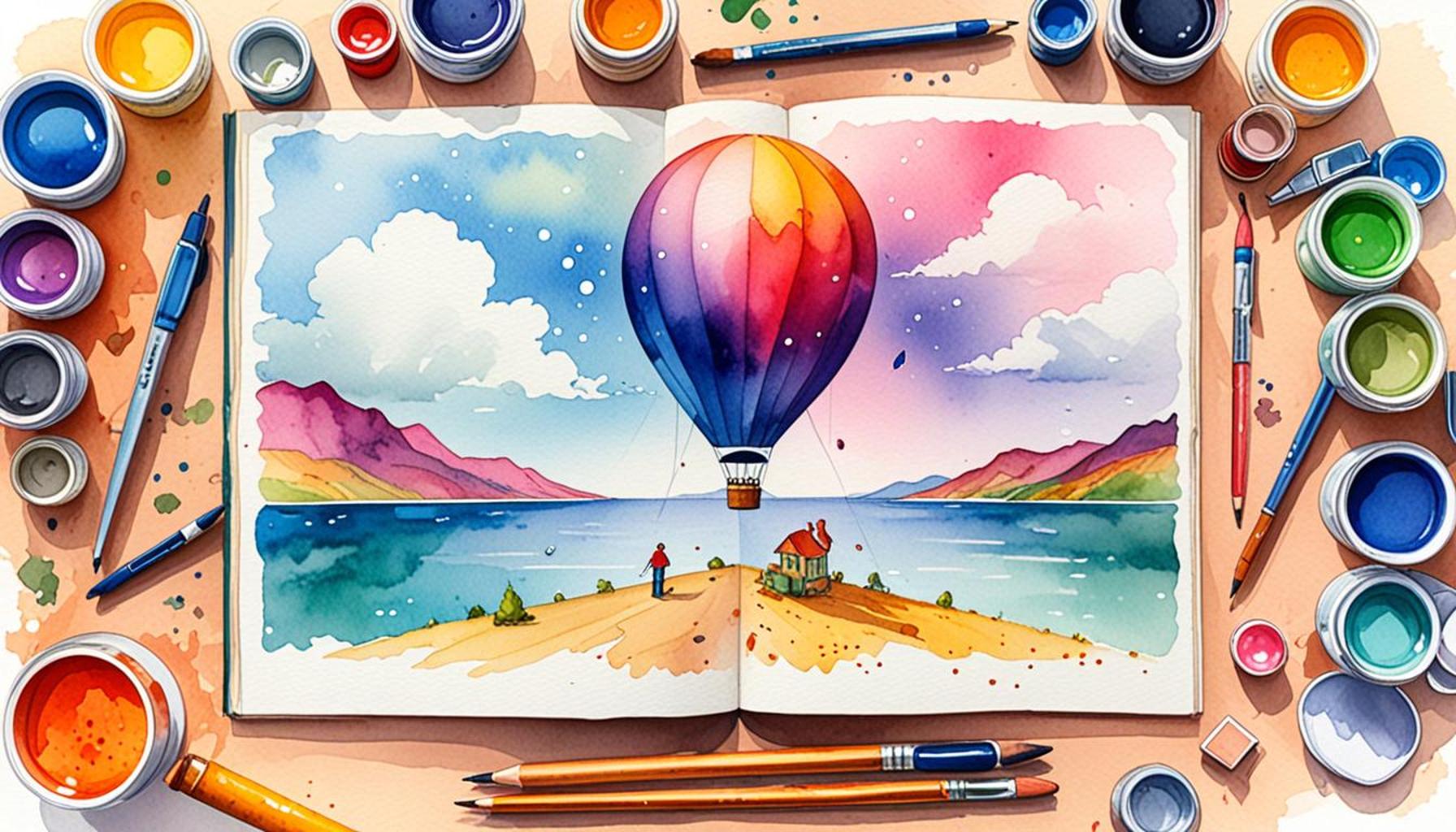Exploring Genres: Techniques for Adapting Your Writing to Different Styles and Formats

Unleashing Your Creativity Across Genres
Writing is a multifaceted craft that extends beyond simple storytelling; it embodies a range of styles, techniques, and expressions. Each genre serves as a unique lens through which you can view the world, crafting narratives that resonate deeply with readers from various backgrounds. Not only does exploring different genres enhance your storytelling abilities, but it also broadens your understanding of diverse audiences, enabling you to connect with people from different walks of life.
- Fiction: In the realm of fiction, writers are invited to delve into imaginative realms where anything is possible. This genre encompasses various sub-genres, from science fiction and fantasy to romance and thriller. For example, Nigerian authors like Chimamanda Ngozi Adichie create compelling narratives that explore themes of identity and culture, grounded in richly developed characters and settings that feel both relatable and aspirational.
- Non-Fiction: This genre offers an avenue for writers to share knowledge and insights based on real-life experiences and facts. Non-fiction can range from memoirs to essays, providing valuable perspectives that can inspire or educate readers. Consider the works of Nigerian journalist and author, Ben Okri, whose non-fiction pieces often center on the socio-political landscape of Nigeria, evoking critical thought about the world around us.
- Poetry: Poetry allows writers to embrace the beauty of language, melding rhythm and imagery to evoke profound emotions. In Nigeria, poets like Niyi Osundare use their craft to comment on societal issues, weaving cultural references and personal experiences into their verses. A well-crafted poem can encapsulate complex ideas in just a few lines, making the reader ponder and feel deeply.
- Scripts: The art of scriptwriting focuses on crafting dialogues intended for performance, whether on stage or screen. Writers in this genre must consider pacing, character development, and the visual elements that audiences will experience. The burgeoning film industry in Nigeria, known as Nollywood, has provided a platform for scriptwriters to tell authentic Nigerian stories, further enriching the global tapestry of cinema.
To adapt your writing across various genres, it is crucial to understand both the common threads and the unique characteristics that define each. For instance, while the narrative voice in Nigerian prose may embody specific cultural nuances, it can differ significantly from Western literary traditions, often reflecting the fabric of Nigerian society in distinctive ways.
- Know your audience: It’s essential to identify who your readers are. Understanding their interests and preferences can guide you in crafting your narrative style accordingly. For instance, addressing young adults may require a different approach than writing for a general adult audience.
- Study examples: One of the most effective ways to learn is by studying the works of established writers across genres. Analyzing their techniques and stylistic choices can provide valuable insights into crafting your narratives.
- Experiment: Don’t shy away from experimenting with new formats or styles. Some of the most significant breakthroughs in writing come from taking bold steps outside your comfort zone. You may find that blending genres brings a fresh perspective to your work.
Diving deeper into these techniques and strategies will equip you with the essential tools necessary to transform your writing, allowing it to resonate with diverse audiences from Nigeria and beyond. The world of writing is full of potential waiting to be explored—are you ready to discover your voice among the many genres?
YOU MAY ALSO LIKE: Read read another article
Understanding the Nuances of Genre
When it comes to writing, understanding the nuances of different genres is essential for weaving compelling narratives that resonate with varied audiences. Each genre not only has distinct conventions but also brings with it a unique set of expectations from readers. As a writer, adapting your approach to these specifics can elevate your storytelling capabilities and broaden your reach.

Fiction is often the jumping-off point for writers aiming to explore their creative boundaries. In Nigeria, fiction writers like Sefi Atta and Teju Cole craft rich, multilayered narratives that delve into the intricacies of societal norms, personal struggles, and cultural identity. What makes Nigerian fiction so captivating is its ability to interlace local dialects and proverbs, enriching the narrative and connecting deeply with local readers while also appealing to a global audience. When writing fiction, pay special attention to character development, plot structure, and thematic depth. Each character needs a distinct voice; personal backgrounds and motivations should inform their actions and decisions within the story. This layering creates authenticity that readers are drawn to.
Non-fiction, on the other hand, requires a different skill set. It mandates a commitment to accuracy, clarity, and the persuasiveness of arguments. In the Nigerian context, figures like Wole Soyinka have established themselves not only as authors of literary fiction but as critical voices in socio-political discourse through their essays and commentaries. When engaging with non-fiction, writers must focus on structuring their narratives logically, ensuring that each section flows into the next while providing credible sources to bolster their claims. Additionally, storytelling techniques, such as anecdotes and personal reflections, can be effectively employed to make non-fiction more engaging. This method allows readers to connect emotionally with the writer’s insights, bridging the gap between facts and feelings.
- Embrace cultural contexts: Each genre is shaped by cultural contexts that can provide richness to your writing. Infuse your stories with local idioms, landmarks, or historical events to enhance authenticity.
- Focus on language: The choice of words carries immense weight in conveying meaning and tone. In poetry, particularly, words meticulously chosen for their sound and rhythm can evoke emotions that simple prose may fail to deliver.
- Maintain audience engagement: Consider methods such as cliffhangers in fiction or compelling headings in non-fiction. These techniques serve to captivate readers, keeping them invested in the narrative or argument at hand.
By striving to understand and navigate the complexities of genre conventions, you set the foundation for a versatile writing career. The ability to traverse different genres offers the opportunity to reach varied audiences and enrich the reader’s experience. As you embark on the journey of exploring genres, they’ll not only challenge your creativity but also expand your capacity to communicate effectively.
Understanding Different Genres
One of the critical aspects of adapting your writing involves understanding the unique characteristics and expectations of various genres. Each genre, whether it be fiction, nonfiction, poetry, or screenplay, comes with its own conventions and styles that must be acknowledged and respected. For example, fiction often focuses on storytelling elements like character development and plot structure, while nonfiction emphasizes factual accuracy and clear communication. Additionally, poetry often necessitates a focus on rhythm, meter, and imagery, which can dramatically alter the way ideas are conveyed. Screenplays, on the other hand, require concise dialogue and visual storytelling, impacting how narrative elements are crafted. Understanding these nuances not only enhances your ability to write in multiple genres but also broadens your audience appeal.
Techniques for Genre Adaptation
Adapting your writing to fit different genres involves several key techniques. First, consider your target audience; each genre attracts different readers, so tailor your language and tone accordingly. Utilizing gripping hooks and emotional resonance are essential strategies in fiction, while clarity and logical organization are pivotal in nonfiction. Moreover, experimenting with genre blending can yield unique results. A historical fiction piece, for example, can incorporate elements of mystery, engaging readers who enjoy both genres. Utilizing detailed research is another beneficial technique, especially when venturing into unfamiliar genres; understanding the genre’s roots and prominent authors can provide insights into best practices and innovative forms. With each adjustment and exploration across genres, your versatility as a writer will grow, opening doors to new ideas and creative opportunities. Embracing this diversity not only refines your skill set but also challenges you to push the boundaries of your writing craft.
YOU MAY ALSO LIKE: Read read another article
Techniques for Mastering Genre Adaptation
Adapting your writing across various genres involves more than just shifting subject matter; it’s about honing specific techniques that resonate with the intended audience. Understanding the techniques for mastering genre adaptation can significantly enhance your versatility as a writer and ensure your work is impactful, regardless of the format or style.
Dialogue plays a pivotal role in both fiction and non-fiction writing. While in fiction, dialogue shapes character relationships and drives the plot forward, in non-fiction, it serves to illustrate points and can bring real voices into the narrative. Incorporating dialogue effectively can add authenticity to your work. For instance, Nigerian writers like Chimamanda Ngozi Adichie skillfully employ dialogue that reflects cultural nuances—capturing the essence of conversational Yoruba or Igbo while still being accessible to global readers. When crafting dialogue, focus on natural speech patterns, cultural context, and diverse perspectives to create realism and relatability.
Imagery and Descriptive Techniques are also vital when transitioning genres, particularly from non-fiction to fiction. Writers can borrow the vividness often found in creative writing to make their non-fiction more engaging. The descriptive language in a memoir can pull readers into your experiences, evoking emotions and prompt reflection. For instance, consider how a Nigerian memoir might describe a bustling market scene—the colors, sounds, and smells can create an immersive experience, transforming mere facts into a compelling narrative. Utilize sensory details and metaphors to draw readers into the world you’re portraying.
Furthermore, structure can vary immensely between genres. In fiction, you may be accustomed to traditional arc structures, whereas non-fiction allows more flexibility. Take a cue from popular works such as ‘Half of a Yellow Sun’ by Adichie, which interlaces multiple viewpoints to build a comprehensive narrative. Conversely, memoirs often favor a chronological narrative while argument-driven non-fiction relies on a well-defined structure to guide the reader through complex theories. Experimenting with different structural approaches can enrich your narrative style and help you find fresh angles in your storytelling.
- Utilize genre-specific tools: Each genre has specific tools that can enhance your writing. Poetry may employ meter and rhyme, while screenwriting focuses heavily on visual storytelling through action descriptions.
- Pacing: Be mindful of the pacing suitable for your chosen genre. Thrillers often rely on rapid pacing to maintain urgency, whereas literary fiction may take a slower approach, allowing for contemplation and character exploration.
- Feedback and Revision: Engage with beta readers who are familiar with your target genre. Different perspectives can illuminate genre-specific expectations, providing valuable insights to refine your manuscript.
In the landscape of Nigerian literature, blending genres has emerged as a captivating trend. Writers are increasingly experimenting with hybrid forms, merging prose with poetry or blending memoir with historical commentary. This intergenre experimentation not only captures attention but also reflects the complexity of contemporary narrative forms. Embracing these techniques can help you seamlessly navigate from one genre to another, enhancing your storytelling prowess.
RECOMMENDED: Check out this similar article
Conclusion: Embracing the Art of Genre Exploration
In the ever-evolving literary landscape, exploring genres offers writers a wealth of opportunities to expand their creative horizons. As we have seen, adapting your writing to different styles and formats is a nuanced process that requires a keen understanding of various techniques. Mastery of elements such as dialogue, imagery, structure, and pacing is essential for crafting compelling narratives that resonate with diverse audiences.
Nigerian writers like Chimamanda Ngozi Adichie serve as exemplary figures in utilizing these techniques to bridge cultural narratives and global perspectives. By seamlessly blending genres, they create enriched storytelling experiences that challenge conventional norms and invite readers to engage more deeply with the text. This fusion reflects not only personal experiences but also broadly universal themes, making their stories relevant across borders.
Moreover, adopting feedback and employing genre-specific tools facilitate a more tailored approach in writing, ensuring that each piece is crafted with intent and purpose. Whether you are writing a thrilling fictional piece or a contemplative memoir, being adaptable and willing to explore different genres can refine your voice and captivate your reader’s imagination.
Ultimately, engaging with various genres is not merely a technical skill; it is an artistic journey that enhances your creative expression. As you embrace the challenge of genre adaptation, remember that each experimental approach brings you one step closer to becoming a well-rounded and impactful writer. So, venture forth into the rich tapestry of genres, and let your unique narrative voice shine through in every style and format you explore.



